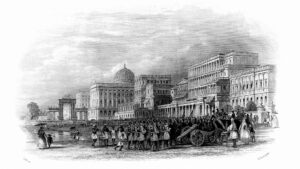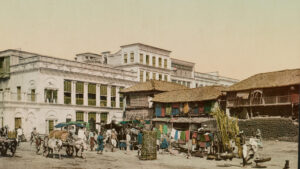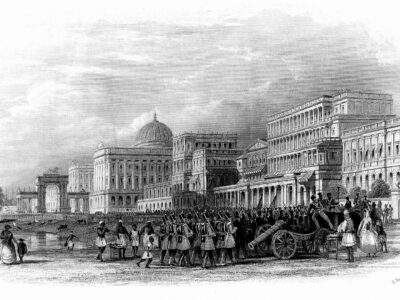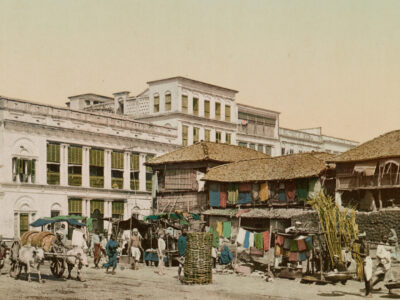Indian nationalist Dadabhai Naoroji eloquently presented the ‘Drain of Wealth’ theory in the 19th century. This theory vividly illustrates the unjust and systematic transfer of wealth from India to Britain during the colonial period, a process that led to India’s impoverishment while significantly enriching Britain. This theory stands as a stark reminder of the economic exploitation and the harsh realities of British colonial policies on India.
The wealth drain began in earnest after the British East India Company gained political power following the Battle of Plassey in 1757. Before this, India had a favourable trade balance, with the East India Company importing large amounts of bullion to pay for Indian goods. Post-Plassey, the scenario reversed as the British established monopolistic control over India’s resources and economy, facilitating the outflow of wealth from India to Britain.
Development of England Using Indian Resources
The wealth siphoned from India played a pivotal role in fueling Britain’s Industrial Revolution. The capital amassed from Indian revenues and the exploitation of Indian labour and resources was a key factor in the growth of British industries. Indian raw materials, such as cotton, jute, and indigo, were exported to Britain at minimal costs, bolstering the expansion of British manufacturing sectors. In contrast, Indian industries, particularly textiles, suffered a severe blow due to the influx of British manufactured goods, leading to deindustrialization and widespread unemployment in India.
Commercialization of Agriculture
British colonial policies transformed Indian agriculture into a commercial enterprise primarily focused on cash crops. The introduction of crops like indigo, cotton, and tea, which were in high demand in Britain, led to a significant shift from subsistence farming to commercial farming. This shift disrupted traditional agricultural practices and made Indian farmers vulnerable to market fluctuations. The commercialization of agriculture also resulted in frequent famines, as food crops were replaced by cash crops, reducing food availability for the local population.
Emergence of a Consolidated National Market
The British established a consolidated national market in India by developing extensive transportation and communication networks. The construction of railways, roads, and canals facilitated the movement of goods and people across the country, integrating regional markets into a single national market. While this development enhanced administrative efficiency and promoted trade, it primarily served British economic interests by ensuring the smooth flow of raw materials from India to Britain and British goods into Indian markets.
Conversion of Land and Labour into Commodities
Under British rule, land and labour in India were commodified to maximize economic exploitation. Lord Cornwallis’s Permanent Settlement of 1793 transformed land into a commercial asset. This system created a class of landlords loyal to the British and responsible for collecting land revenues. However, it also led to widespread indebtedness among peasants, many of whom lost their lands and became tenant farmers or labourers. British administration exploited Indian labour to serve British economic interests. Indian soldiers and labourers were employed at lower wages, facilitating the expansion of British economic activities within India and other British colonies. This exploitation of labour further contributed to the impoverishment of the Indian populace.
Adverse Economic Policies
The economic policies implemented by the British created a colonial economy characterized by backwardness and stagnation. The focus on the extraction of raw materials and the suppression of Indian industries hindered economic development. The lack of investment in infrastructure and industries meant that India remained primarily agricultural, with limited industrial growth.
The colonial economy was designed to serve British interests, leading to an economic structure that needed to be more conducive to self-sustained growth. The drain of wealth, combined with the destruction of traditional industries and the exploitation of resources and labour, resulted in a stagnant economy that struggled to recover even after independence.








